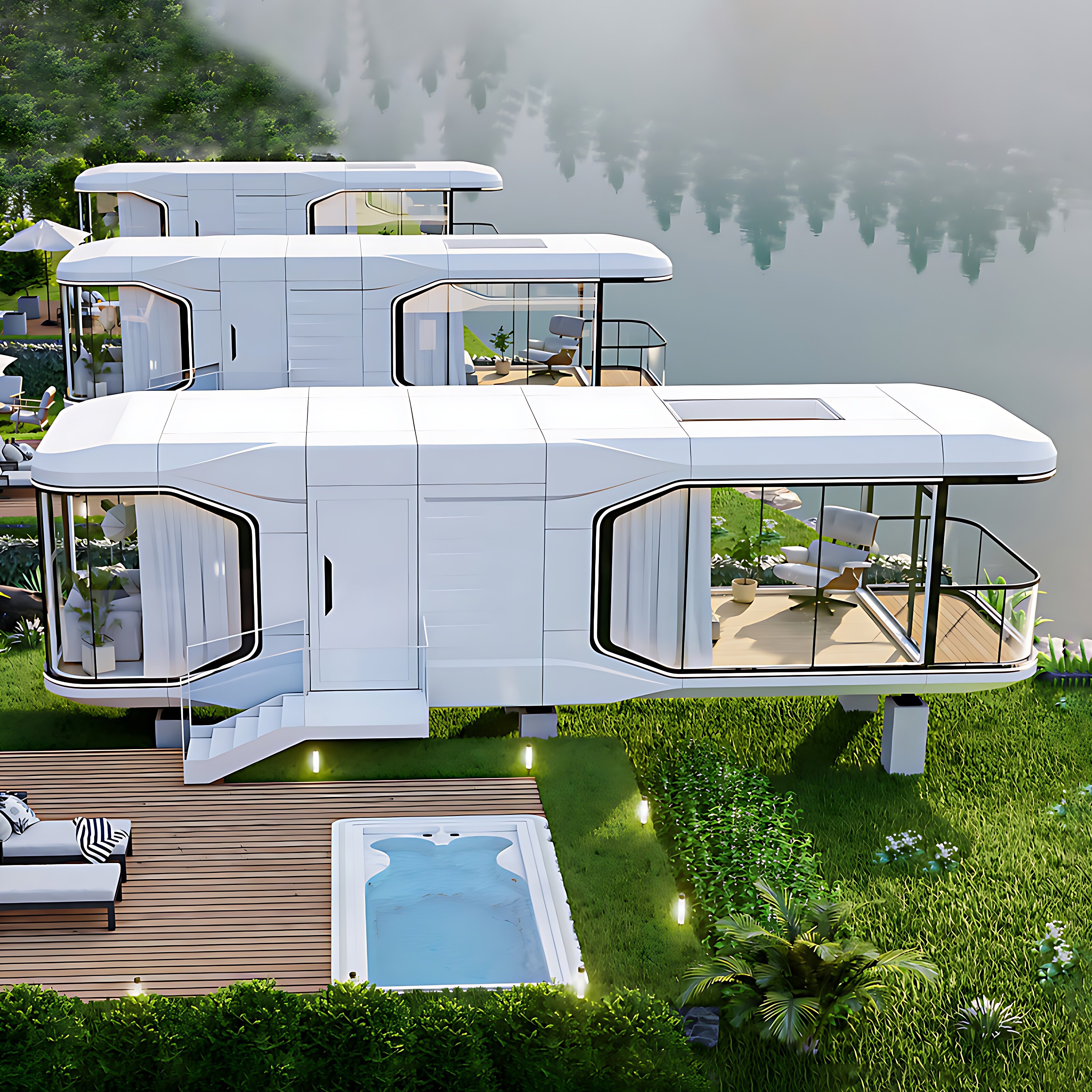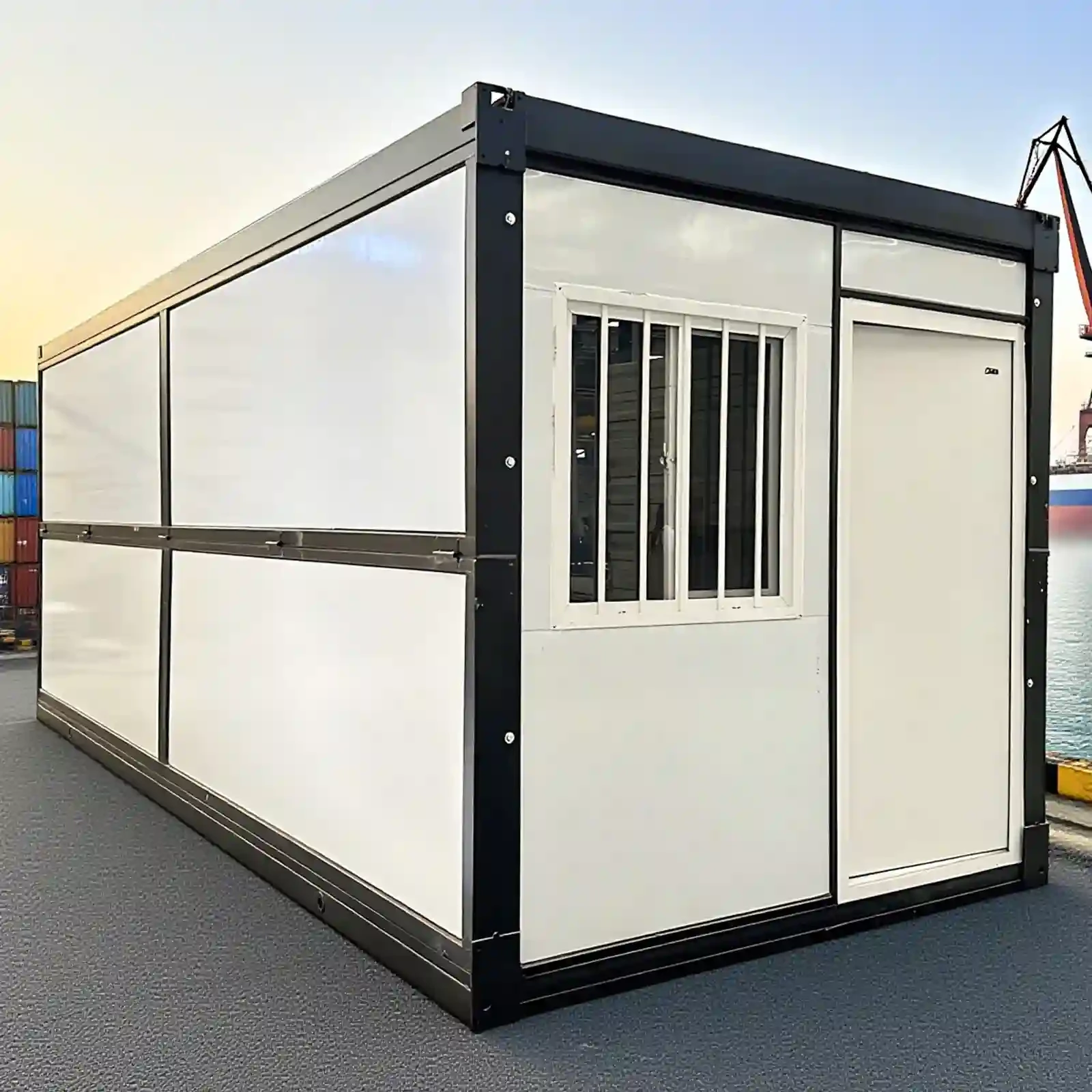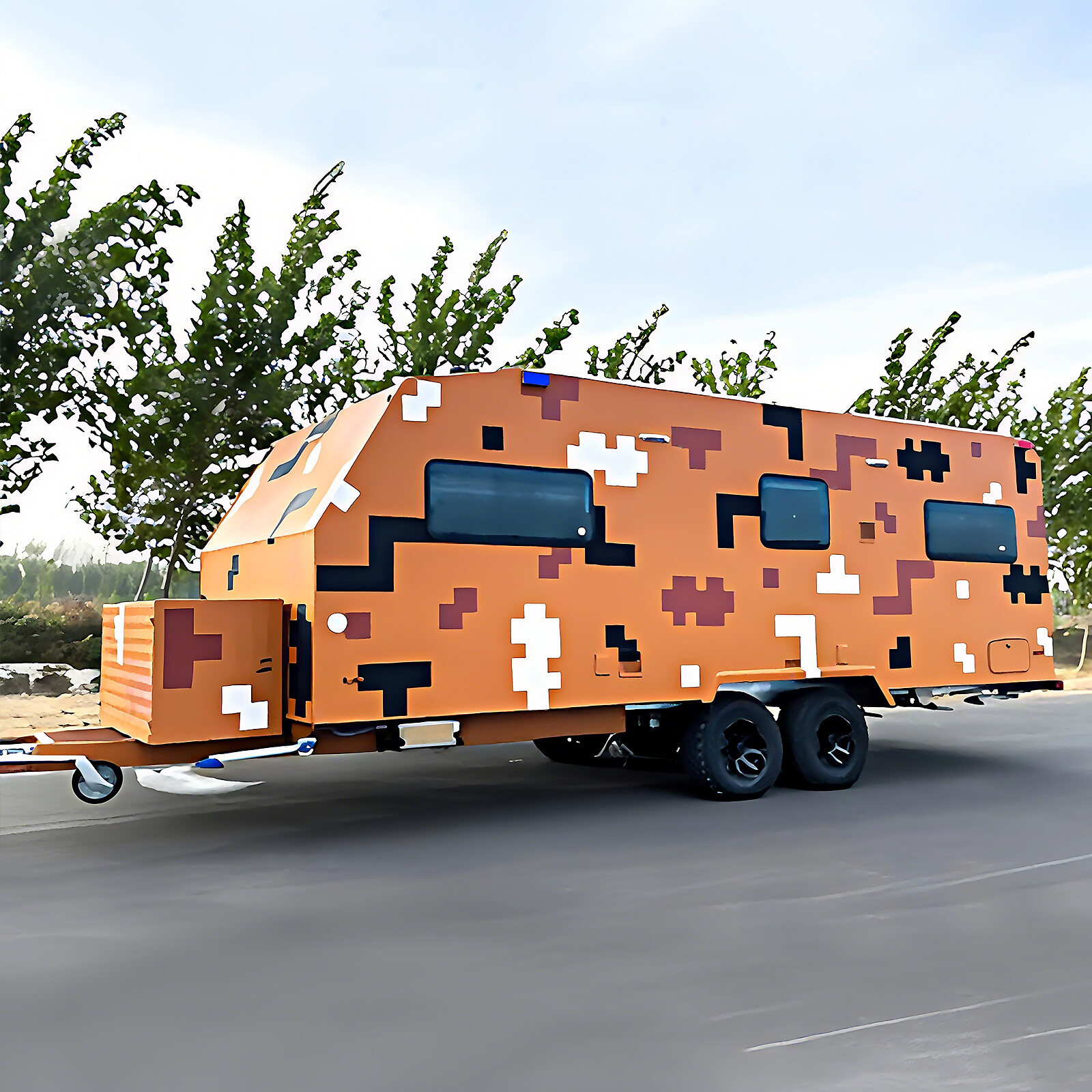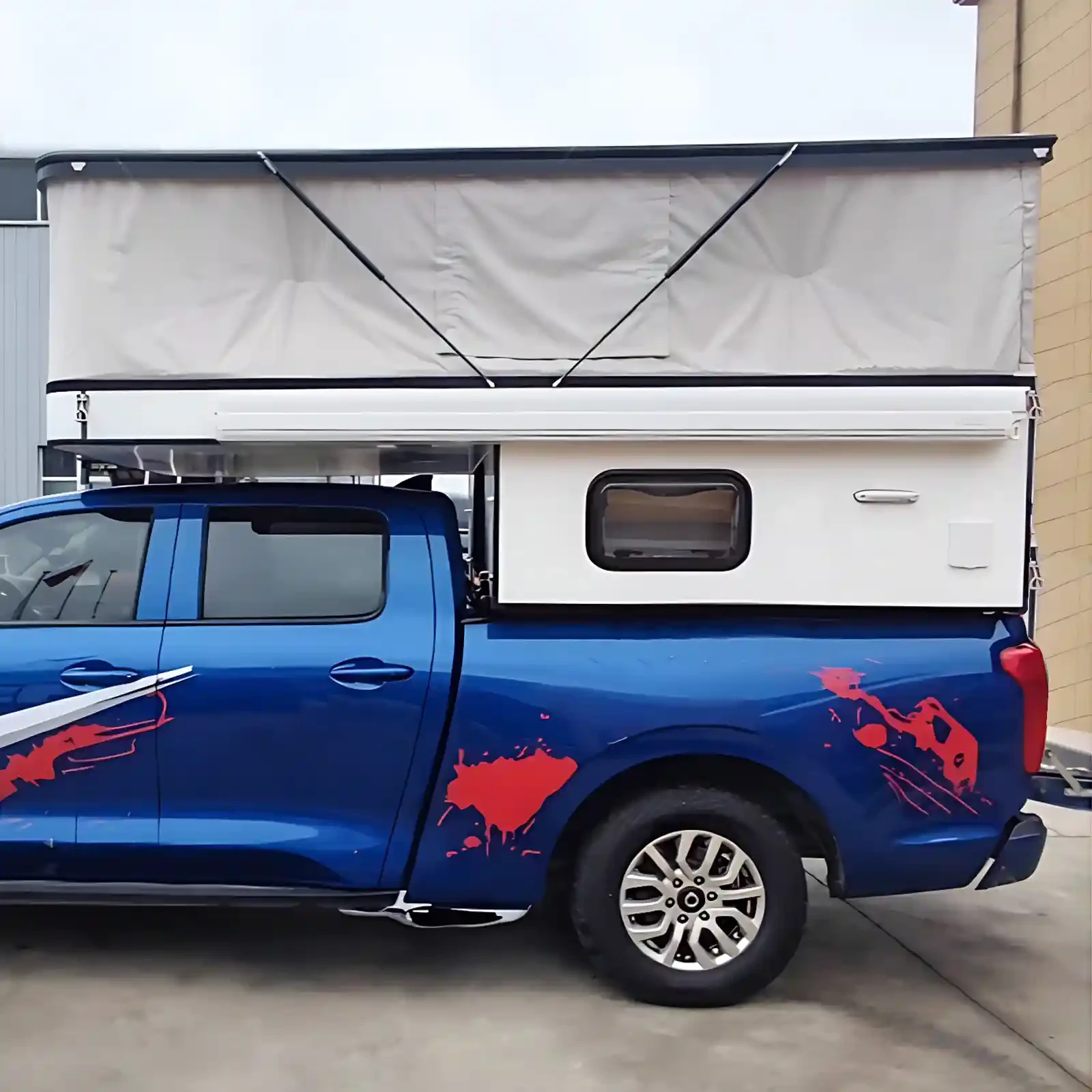In the construction sector, with the diversification of living needs and the continuous innovation of construction technology, space-capsule villas are gradually gaining popularity as an emerging form of living. Construction cycle is a key indicator of project efficiency, and space-capsule villas offer significant advantages over traditional villas in this regard. A deeper dive into the differences in construction cycles between these two types of villas offers valuable insights for owners, developers, and those working in the construction industry.
Analysis of the construction period of the villa space capsule
Prefabrication shortens foundation construction time: Villa space capsules are often prefabricated. Using advanced production equipment and standardized processes, each module is precisely manufactured in a factory setting. From the construction of the capsule's steel structure frame to the installation of interior wall, ceiling, and floor materials, everything is efficiently completed in the factory. For example, the main structure and initial interior finishes for a standard-sized villa space capsule module typically take only one to two weeks. This is because factory production is unaffected by external factors such as weather and site conditions, allowing the production process to proceed 24 hours a day, greatly improving production efficiency. In contrast, traditional villa construction involves on-site foundation construction and wall masonry, which are susceptible to weather influences. Rain, for example, can hinder concrete pouring and masonry work, leading to construction delays.
Rapid assembly enables efficient construction: Once the villa capsule modules are transported to the construction site, the assembly process is relatively simple and quick. Since the modules have been pre-commissioned and pre-installed at the factory, only simple splicing and connection work is required on-site. Using cranes and other equipment, the professional construction team can quickly lift the modules to their designated locations and securely connect them using high-strength bolts and welding. The entire assembly process, including connecting water and electricity lines and final equipment commissioning, is typically completed within 3-5 days. For example, in villa capsule projects at some tourist resorts, the construction team was able to assemble multiple capsules in a short period of time, quickly commissioning them and providing accommodation services to tourists. This rapid assembly method avoids the extensive on-site wet work required in traditional villa construction, such as plastering and wall construction, significantly shortening the construction period.
Overall Construction Time Summary: Combining prefabrication and on-site assembly, the typical construction period for a villa capsule, from order placement to final delivery, is approximately one to three months. This period will, of course, be affected by factors such as the capsule's complexity, order quantity, and transportation distance. However, overall, the construction period is significantly shorter than that of a traditional villa.
Analysis of the construction cycle of traditional villas
Foundation construction is time-consuming: Traditional villa construction begins with foundation construction, which includes site leveling, excavation, ground preparation, and foundation pouring. The difficulty and time required for foundation construction vary greatly depending on the geological conditions. In areas with complex geological conditions, such as soft soil foundations, foundation reinforcement treatment such as piling is required, which can take weeks or even months. Even in areas with good geological conditions, foundation construction typically takes 2-4 weeks and includes multiple steps such as excavation, cushion layer pouring, steel tying, and concrete pouring. Each step requires a certain amount of curing time to ensure the strength and stability of the foundation.
The main structure construction process is tedious: After the foundation is completed, the main structure construction phase begins. Traditional villas are mostly constructed of brick-concrete or frame structures. Both types of structures involve extensive on-site work. Brick-concrete structures require brick laying, which limits the daily masonry height and requires waiting for the walls to dry and stabilize naturally. Frame structures, on the other hand, require the pouring of reinforced concrete, including the construction of columns, beams, and slabs. Each pour requires curing, generally lasting at least seven days. The main structure construction typically takes two to six months, depending on the size and complexity of the villa. For example, the main structure of a traditional two-story villa may take three to four months to construct.
The renovation and decoration phase is time-consuming: The renovation and decoration phase of a traditional villa is also a lengthy process. It includes multiple steps, including interior and exterior wall plastering, door and window installation, plumbing and electrical wiring, floor and wall finishing, and painting. Each step requires meticulous execution and coordination between different types of work, making the construction sequence and timeline complex. For example, after plastering, walls must wait for drying before painting can proceed. Door and window installation requires precise measurement and testing to ensure a tight seal and aesthetically pleasing finish. The entire renovation and decoration phase typically takes three to six months, not including potential delays due to design changes, material supply issues, and other factors.
Overall Construction Time Summary: From groundbreaking to final delivery, traditional villa construction typically takes 6-12 months, or even longer. Construction issues such as inclement weather, design changes, and quality issues can further extend the construction period.
Comparison of construction periods and advantages of the two
Significant Time Difference: The above analysis shows that the construction cycle for a space villa is typically 1-3 months, while the construction cycle for a traditional villa is 6-12 months or even longer. This means that the construction cycle for a space villa can be shortened by 3-9 months compared to a traditional villa, significantly improving time efficiency. For time-sensitive projects, such as short-term accommodation facilities in tourist resorts and temporary housing needs, space villas can quickly meet demand, saving investors significant time and costs, enabling them to commence operations and generate returns more quickly.
Analysis of the Advantages: The short construction period for villa capsules is primarily due to their prefabricated production and rapid assembly model. Prefabrication shifts the majority of construction work to a factory setting, improving production efficiency and quality consistency. Furthermore, the on-site assembly process is simple and rapid, minimizing on-site wet work and cross-contract work, reducing construction risks and the potential for delays. Traditional villa construction, on the other hand, involves extensive on-site work, complex construction techniques, and lengthy maintenance, resulting in a longer construction period. Furthermore, the villa capsules' high degree of design standardization reduces the potential for design changes and further ensures controllable construction periods.
Impact on the Construction Industry: The short construction cycle of villa capsules not only brings time and cost benefits to owners and developers, but also has a positive impact on the development of the construction industry. It has prompted traditional construction companies to explore new construction models, promoting the industrialization and prefabrication of buildings. An increasing number of construction companies are focusing on and investing in the research and development and production of prefabricated buildings to enhance their competitiveness. Furthermore, the emergence of villa capsules offers a new solution for the construction industry, meeting the diverse living space needs of different customer groups and promoting innovation and development in the industry.
Compared to traditional villas, space villas offer significant advantages in terms of construction time. Their rapid and efficient construction model has brought new vitality and development direction to the construction industry. With the continuous advancement of technology and the expansion of its application, space villas are expected to be applied in more fields, bringing greater convenience to people's living and daily lives.

 USD
USD
 GBP
GBP
 EUR
EUR






